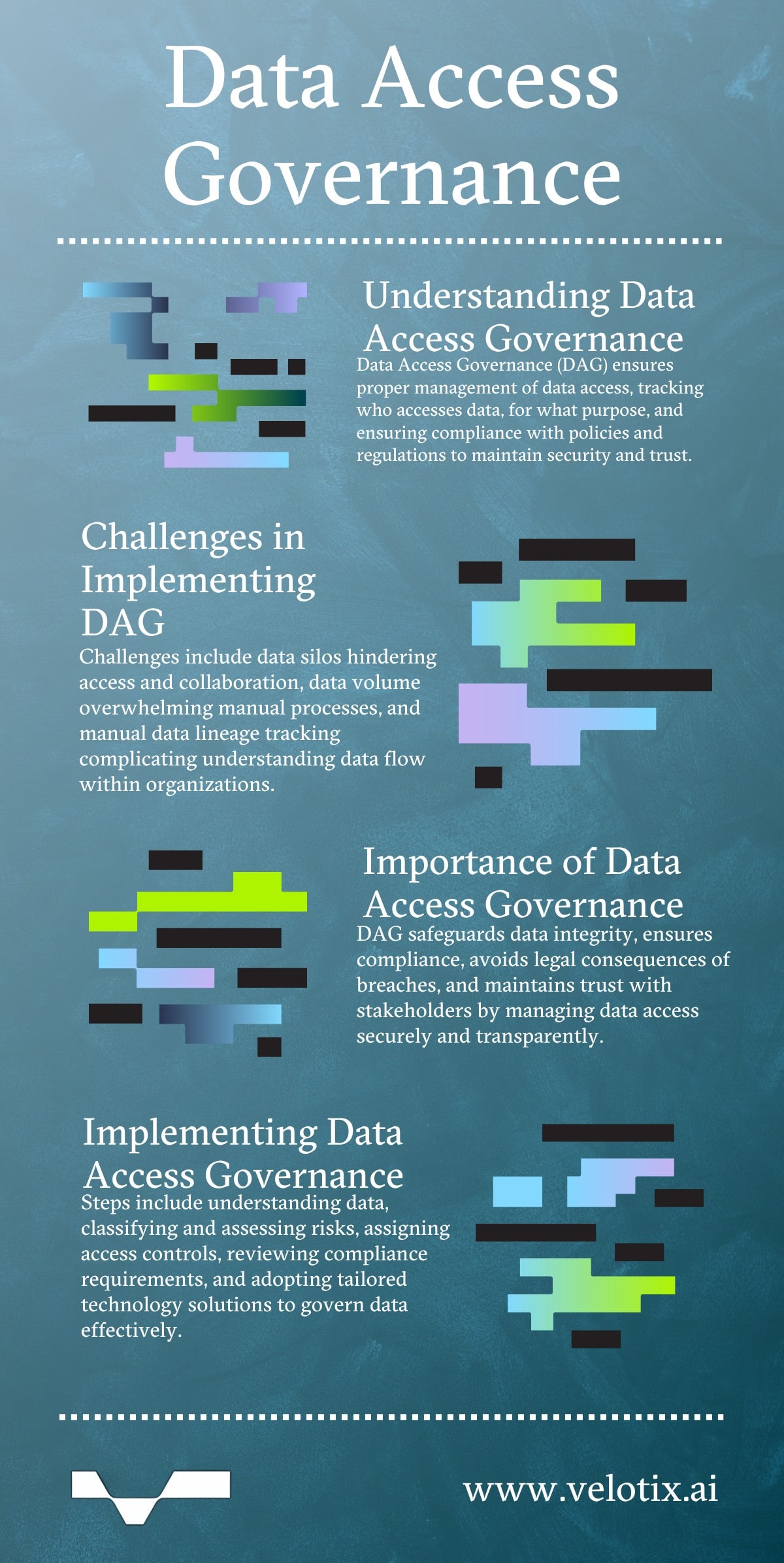What is Data Access Governance?
Data access governance (DAG) means implementing the proper framework to know instantly who has access to what data, for what purpose, according to which internal policy or external regulation, during what time, what was done with the data, where is the data now that it’s been transformed into something else.
In short, DAG is a method for organizations to manage who has access to the data at any given time. This information is crucial. While organizations should strive for democratized data access, if it is not properly managed, organizations can find themselves in the midst of serious security issues, leading to fines and penalties, harm to their brand, and loss of customer trust. Proper DAG means enterprises can be both privacy and data driven at the same time, meaning that more people with access does not mean that the information is less secure.
Why You Need Data Access Governance
Gartner predicts that by 2024, three-quarters of the world’s population will be covered by data protection laws. The most commonly known are GDPR & HIPAA, but there are over 200+ regulations created daily, which means that organizations need a technological framework to get ahead of it. However, organizations struggle to implement the proper data access governance tools due to the following challenges:
- Data Silos: Data silos create difficulties in finding and accessing data, data quality, and consistency. Because data is not centrally managed, different versions of the same data can exist in different silos, leading to inconsistencies and errors, making it difficult to gain a complete and accurate view of the organization’s data. Additionally, silos limit collaboration and information sharing within the organization. Different teams or departments may be using different systems, making it difficult for them to access and share data with each other. This can lead to inefficiencies and hinder the organization’s ability to make data-driven decisions.
- Data Volume: the mass amount of data in an organization makes it difficult to access and analyze it in a simple way. Sometimes, applications have limitations on the amount of data they can display, meaning a database administrator must go through and manually comb the data to find the proper dataset. Without automation, this process is not-only labor intensive, but prone to human error and therefore leaves the organization vulnerable to fines, regulations, or the mis-assignment of data access to the wrong party.
- Data Lineage: Data lineage is the process of tracking the origins and movements of data within an organization. This can include tracking where data comes from, how it is transformed and manipulated, and where it ultimately ends up. Combined with the data silos, it is difficult for organizations to gain a comprehensive view of their data and how it flows between different systems. Any effort to monitor this is completely manual.
To address these challenges, organizations can implement a data governance solution that includes processes and tools for creating a single source of truth for all of the data in a company and implementing technology solutions to automate and streamline the data lineage, Data access governance solutions mean giving the right data, to the right people, at the right time, and for the right purpose.
It helps ensure that only authorized individuals have access to sensitive or confidential data, and that access is managed in a monitored and secure manner and this access can be tracked in a secure and holistic way. This is important for:
- Protecting the security and integrity of an organization’s data and preventing the unauthorized access of tampering with that data.
- Compliance with relevant laws and regulations, such as those related to data privacy and protection
- Avoiding potential legal or financial consequences of data breaches or other unauthorized access to sensitive data
- Maintaining trust and confidence of customers, partners, and other stakeholders who may be affected by the organization’s handling of data.
Read more: Key Components for Modern Data Governance

How to Implement Data Access Governance:
- Develop a clear understanding of your organization’s data: where it is stored and how it is used, specifically the sensitive data. Create a classification system to execute a formal risk assessment which will identify which security measures are most appropriate. (see Anonymized Data)
- Assign Access Controls: it is important to assign access controls to each user in the company. For example, the administration department, IT department, and finance department may each be assigned to separate groups with specific access to the data they need to perform their jobs. This ensures that only necessary personnel can access sensitive information, helping to protect the security of the organization.
- Review Compliance Requirements: This is a good time to review any compliance requirements and update your privacy policies as needed. By staying vigilant and keeping your policies current, you can help protect the security of your organization and its data.
There is no “one size fits all” when it comes to implementing the proper technology to govern your data. To learn more about data governance best practices, read our blog on
Policies, Platforms, Protection: How to Stay Ahead in Data Governance
